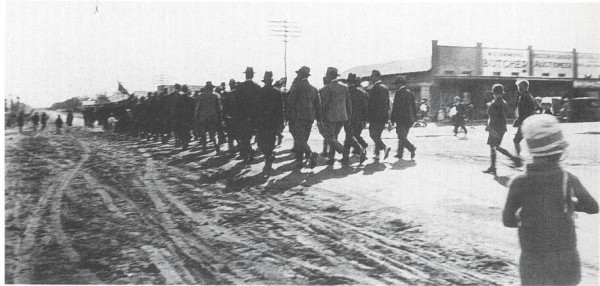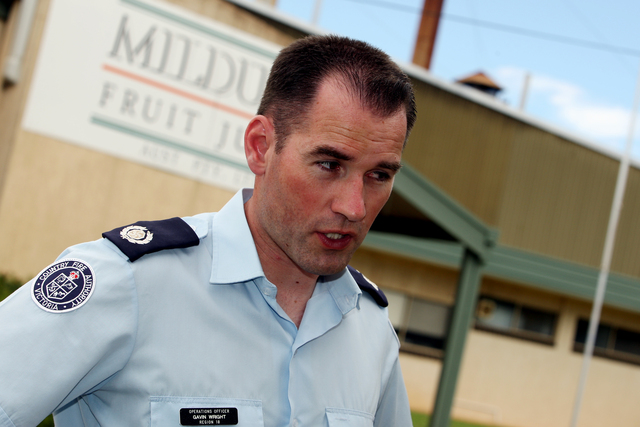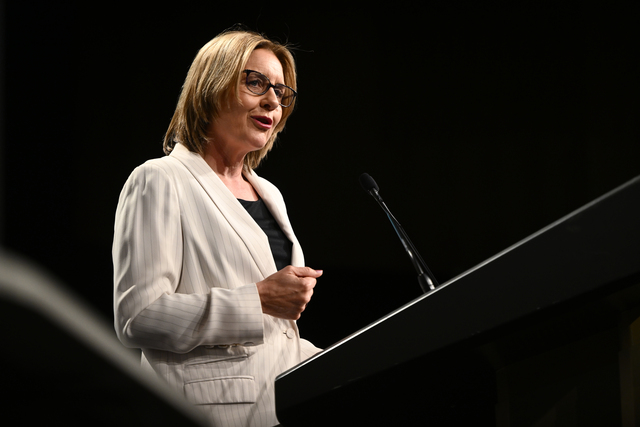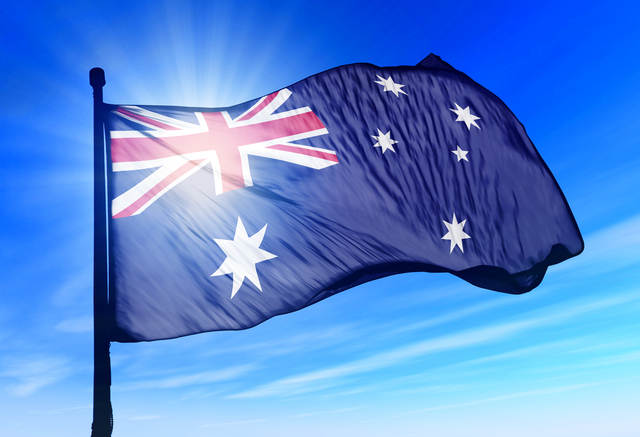ANZAC Day ceremonies in the largest soldier settlement in Australia weren’t always as organised as they are today.
The first Anzac Day ceremony in Red Cliffs was held on April 24 in 1921.
The town was mostly a tent city at the time, and a service was held at 8pm that evening as a repeat of a Sunday afternoon service in Mildura the day prior.
Six days later, the wives of Diggers at Red Cliffs wrote to Sunraysia Daily, expressing their appreciation of the band performance on Anzac night.
Describing it as the first entertainment for ladies since the settlement started, they requested a repetition at an early date.
“Life is monotonous out here, with nothing to break it,” wrote the author.
The following year, the Diggerland Theatre had completed construction, and Venerable Archdeacon Best, who served in France and Palestine, invited community members to Diggerland for a fitting commemoration, at 3pm on April 23.
As the town developed, streets and roads were given names.
Red Cliffs & District Historical Society researcher Chris Cook explained that the returned servicemen didn’t want to forget what happened during on the war, but they were focused on the future.
“All the streets and roads weren’t named for military, no generals, no battles, they didn’t want to be reminded of it when they walked up the street,” Ms Cook said.
“All the roads and things – they’re rivers, trees, plants; peaceful.
“They fought for peace, they wanted a peaceful place, so they were establishing something that was going to be a place of peace rather than a reminder of war.”
In 1923, a special Anglican commemoration was held on April 23 once again, this time at 11am, and business premises’ in Red Cliffs were closed for the whole day, by decision of the Red Cliffs Traders’ Association.
The next year was more haphazard.
Records show the Red Cliffs State School held Anzac Day on April 17, owing to April 25 falling in the Easter vacation.
A customary two minutes of silence was observed, and then patriotic and devotional songs including the Recessional were performed.
On April 25, a group of five or six settlers gathered at 11am to observe a two minutes silence by themselves, and the majority of businesses remained open.
Red Cliffs settlers had later complained to Sunraysia Daily at the lack of organisation, and due observance of the day.
The following month, the Red Cliffs branch of the Australian Natives’ Association took issue – not with the lack of public observance – but that the Red Cliffs State School observed Anzac Day without one of their representatives present to explain the meaning of the day to the children.
In 1925, a more organised effort was made as the Red Cliffs Fruit-growers’ Association hosted a smoke social at Diggerland to commemorate Anzac Day on April 23.
The Prime Minister, Victorian Premier and other state and federal delegates were invited to attend, but were ultimately apologies.
Days later, a local reverend wrote to Sunraysia Daily suggesting the actual anniversary for fit observance of Anzac Day should be the nearest Sunday to April 25 as it was “a day of sacred nature, and it was also a day for rejoicing”.
In August 1925, Red Cliffs had established a Returned Sailors and Soldiers Imperial League of Australia branch, which would later become the RSL.
Ahead of the 1926 Anzac Day ceremony, the RSSILA agreed to issue uniforms for returned soldiers to use at ceremonial parades nationally, allowing them to wear those instead of ragged, moth-eaten uniforms from the war.
A parade had not taken place at Red Cliffs at this point.
A solider settler had written a letter to the editor to Sunraysia Daily prior to Anzac Day in 1926, where they said “as a comparatively new arrival in the soldier settlement of Red Cliffs, I am looking forward to the Anzac Day celebrations. Quite a number of people have assured me that I am doomed to disappointment, but I am still hoping to see something out of the ordinary.”
Discussions were held through the media later that year of the need for a cenotaph to be erected in Red Cliffs to be completed by next Anzac Day.
Not much is said of the Anzac Day service in 1927, apart from it was hosted by the Anglican Church, and the cenotaph did not eventuate.
In 1928, two guns, an 8.2 German howitzer and the Turkish 75mm were installed in the town square, Anzac Day was marked on April 25 for the first time, and a record crowd attended Diggerland.
By 1929, Anzac Day (April 25) was declared a gazetted holiday in Victoria, and the only places allowed to open were where meals were served to boarders.
A pure white cross was designed and constructed by a local pastor in the square, and a wreath of poppies was hung on it by the Red Cliffs RSSILA during the ceremony.
Later that year, talk again turned to the need to erect a cenotaph, and the Red Cliffs Women’s Club stepped in to organise.
Red Cliffs & District Historical Society president Helen Petschel said a memorial wasn’t built in Red Cliffs after World War I, as no soldiers came from Red Cliffs, as the town hadn’t yet been established.
“The women realised that their husbands needed to remember the friends that they lost … once they had the cenotaph that was quite settling, here is somewhere where we can remember our mates,” Ms Petschel said.
As funds continued to be raised, a temporary Shrine of Remembrance was established in 1930, and the town held its very first parade march, described as an “inspiring spectacle of 100 ex-servicemen”.
The cenotaph was constructed in January 1931 after fundraising efforts by the Women’s Club and the Red Cliffs Sub Branch of the RSA.
It cost an estimated 120 pounds, of which 90 was in hand, and a further sum was promised.








